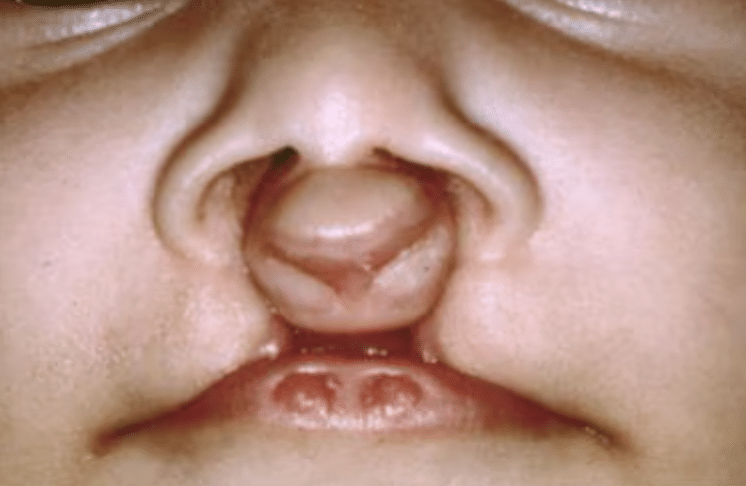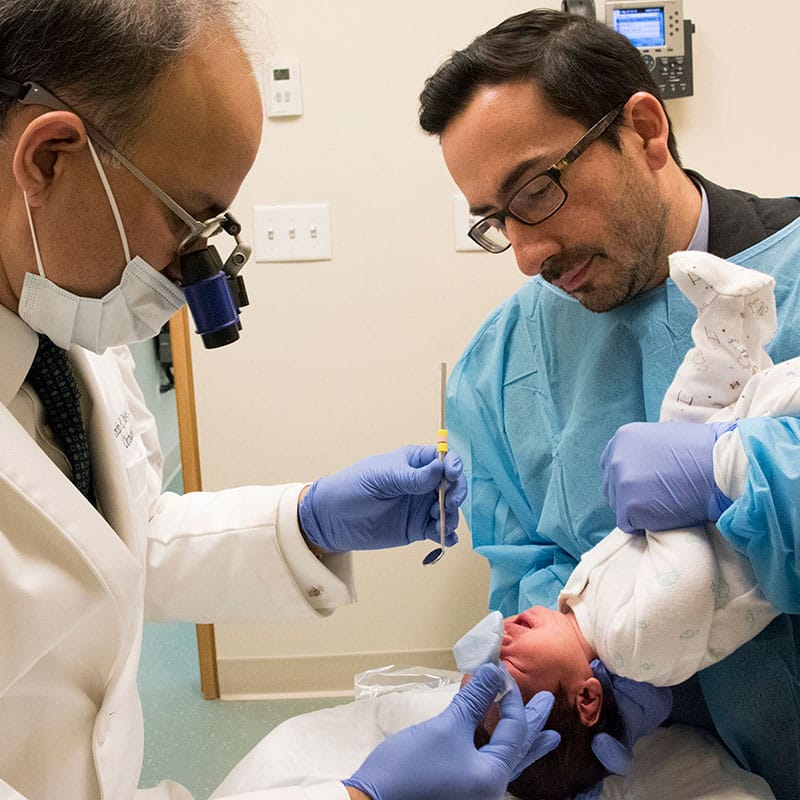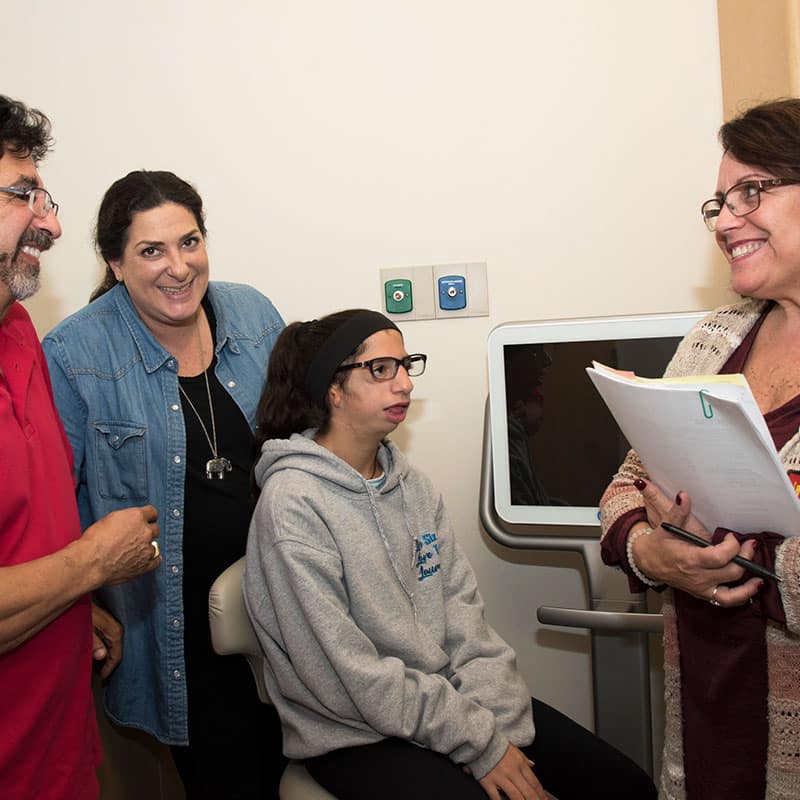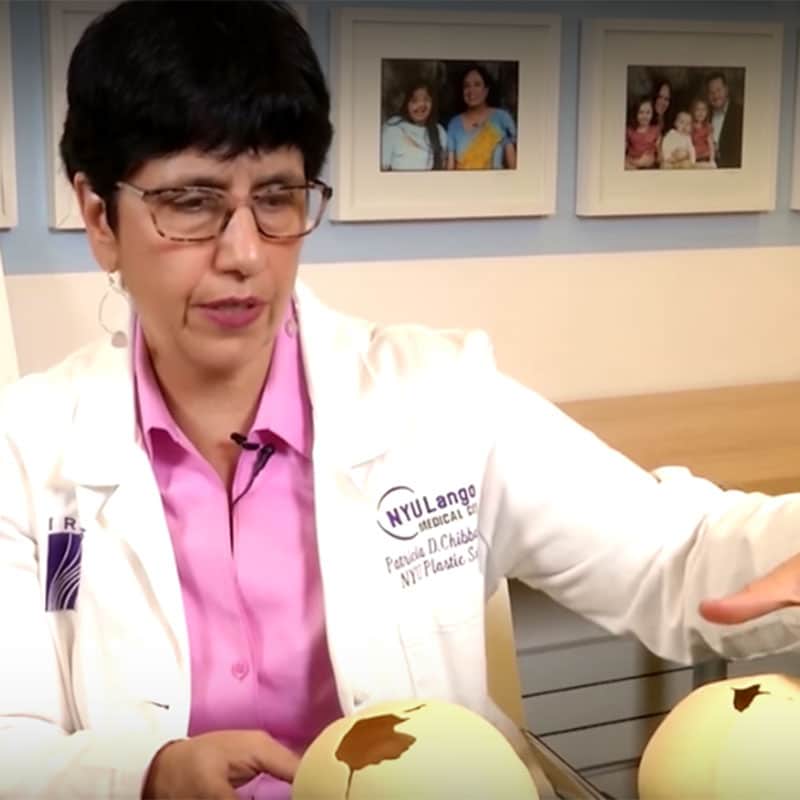Craniofacial Conditions > Van der Woude Syndrome
What is Van der Woude Syndrome?
Van der Woude Syndrome is a rare genetic disorder characterized by a combination of physical and developmental anomalies. Van der Woude is caused by mutations in the IRF6 gene on chromosome 1, which plays a role in craniofacial development. It is primarily known for its distinctive facial features and can affect various organ systems.
Key features of Van der Woude Syndrome include:
- Cleft Lip and/or Palate: A congenital split in the upper lip and/or roof of the mouth, which can impact feeding and speech.
- Facial Anomalies: Characteristic facial features, including a broad forehead, flat midface, and sometimes a prominent nasal bridge.
- Dental Anomalies: Abnormalities in tooth development, such as missing or malformed teeth.
- Developmental Delays: Potential delays in physical and cognitive development.
A confirmed diagnosis of Van der Woude Syndrome typically involves identifying these key features and may require genetic testing.
Van der Woude Syndrome
Overview: Van der Woude Syndrome is a rare genetic disorder associated with cleft lip and/or palate and distinctive facial anomalies. The condition may affect various aspects of physical and developmental health.
Prevalence: Van der Woude Syndrome is extremely rare, with an estimated prevalence of less than 1 in 100,000 births.
Causes: The condition is usually caused by mutations in the IRF6 gene, which plays a role in craniofacial development.
Diagnosis: Diagnosis is based on clinical evaluation of physical features and may be confirmed through genetic testing for IRF6 mutations.
Common Features: Cleft lip and/or palate, distinctive facial features, dental anomalies, and potential developmental delays.

Cleft lip and cleft palate in an infant with van der Woude syndrome. (Photo courtesy of Mary J. Hauk, DDS.)
Additional Characteristics of Van der Woude Syndrome
In addition to the core features, individuals with Van der Woude Syndrome may exhibit:
- Facial Features: Distinctive appearance, including a broad forehead, flat midface, and prominent nasal bridge.
- Cleft Lip/Palate: Can affect feeding, speech, and require surgical intervention.
- Dental Issues: Missing or malformed teeth that may need orthodontic care.
- Developmental Delays: Variability in physical and cognitive development, requiring early intervention.
The range and severity of symptoms can vary greatly among individuals, making each case of Van der Woude Syndrome unique.
Causes of Van der Woude Syndrome
Van der Woude Syndrome is primarily caused by mutations in the IRF6 gene, which is crucial for the development of facial structures. These mutations are typically inherited in an autosomal dominant pattern. Genetic testing can confirm the presence of IRF6 mutations and aid in diagnosis.







